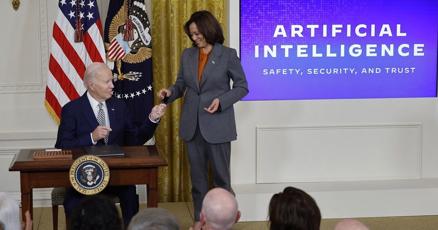President Joe Biden’s recent executive order on artificial intelligence has sparked a debate between those concerned about potential government overreach and those worried about insufficient action. The order mandates various departments to gather public input, create new regulations, and generate multiple reports, delegating significant responsibilities to agencies like Homeland Security and Commerce, along with the National Institute of Standards and Technology, tasked with establishing safety standards.
The directive also instructs the Secretary of Homeland Security to form an advisory AI Safety and Security Board to enhance security measures, while requiring the Defense, Veterans Affairs, and Health and Human Services departments to develop guidelines for the responsible application of AI in their respective domains.
Furthermore, the order assigns the Federal Trade Commission, the Consumer Financial Protection Bureau, and the Federal Housing Finance Agency the responsibility of formulating regulations to address bias and other potential harms stemming from AI systems. The FTC is also tasked with exploring the enforcement of fair competition among AI companies within its existing jurisdiction.
The timeline set by the order mandates that within three to nine months, the involved agencies must produce numerous reports, solicit public feedback before crafting new regulations, and identify funding opportunities for AI across various sectors.
This flurry of activity has attracted attention from a wide range of stakeholders. While the U.S. Chamber of Commerce views the executive order positively, emphasizing its potential to establish global standards for AI safety and fund innovative projects, concerns have been raised by individuals such as Jordan Crenshaw, a senior vice president at the chamber. Crenshaw highlights apprehensions regarding the influx of new regulations and the extensive public commentary required by different agencies, cautioning against potential abuses of power by agencies like the FTC, CFPB, and FHFA.
The order, with its numerous directives and calls for public input, has raised questions about the capacity of stakeholders to effectively engage with the process. Digital rights advocates, like Caitlin Seeley George from Fight for the Future, express hopes for meaningful change resulting from the order but also raise concerns about the possibility of agencies merely fulfilling the minimum requirements, rendering the executive order ineffective in addressing critical issues related to biased and discriminatory AI practices.
NIST is expected to play a crucial role in establishing new safety standards for AI. Vice President Kamala Harris has announced the establishment of an AI Safety Institute under NIST, aimed at developing rigorous standards to assess the safety of AI models for public use. However, a recent study evaluating NIST’s capabilities revealed significant deficiencies within the agency, raising questions about its readiness to meet the new demands outlined in the executive order.
As the government moves towards regulating AI development to address ethical concerns, transparency, and accountability, the landscape of AI governance is evolving rapidly. The establishment of regulatory frameworks and oversight mechanisms is crucial to ensuring the responsible and equitable deployment of AI technologies across various sectors.






